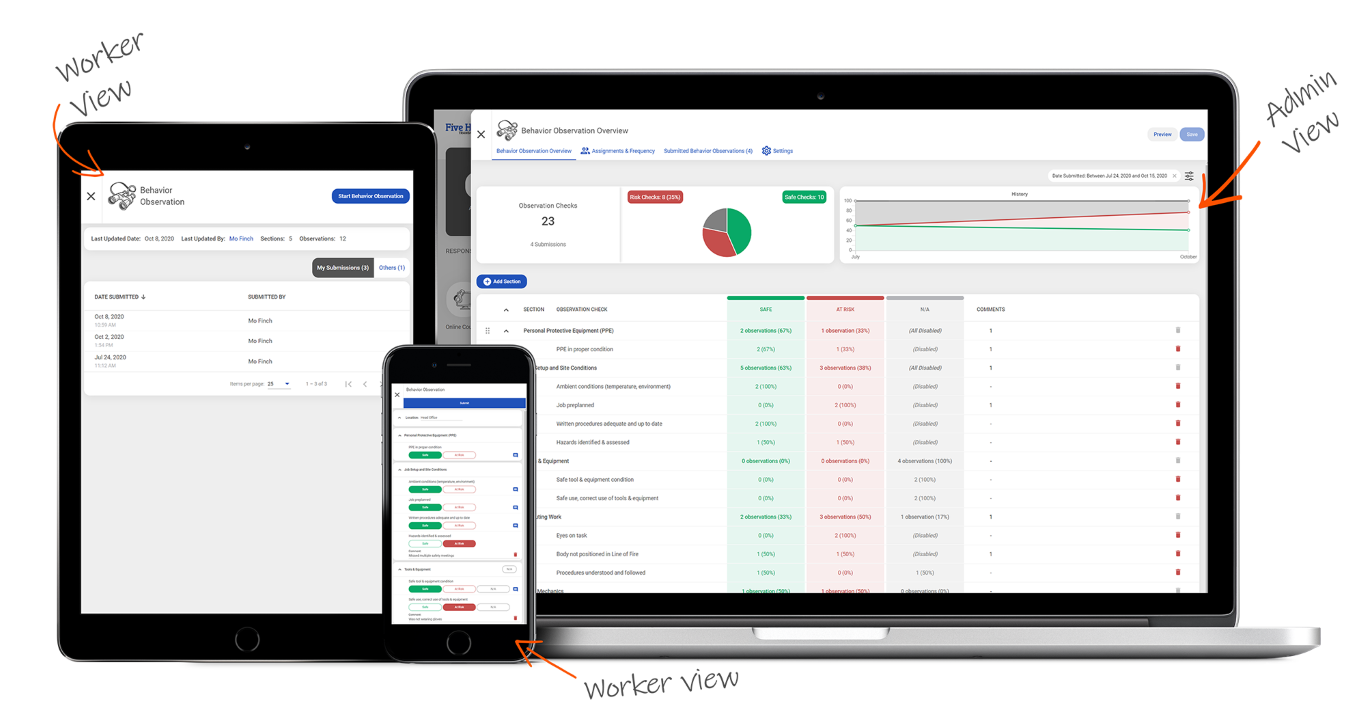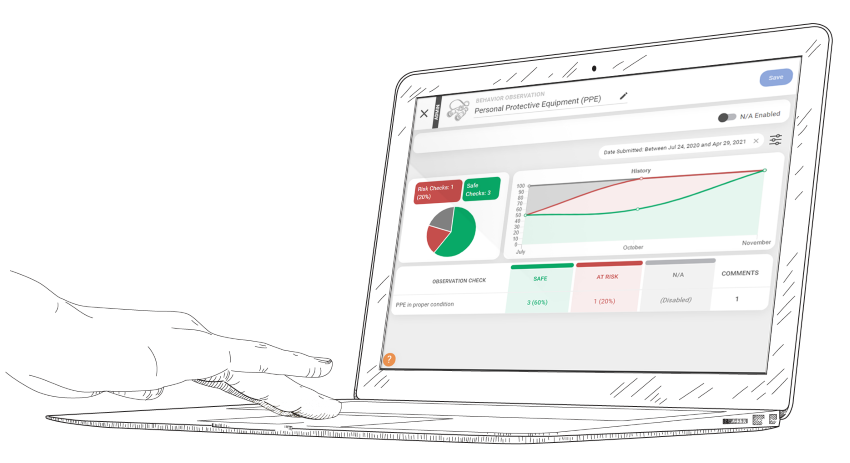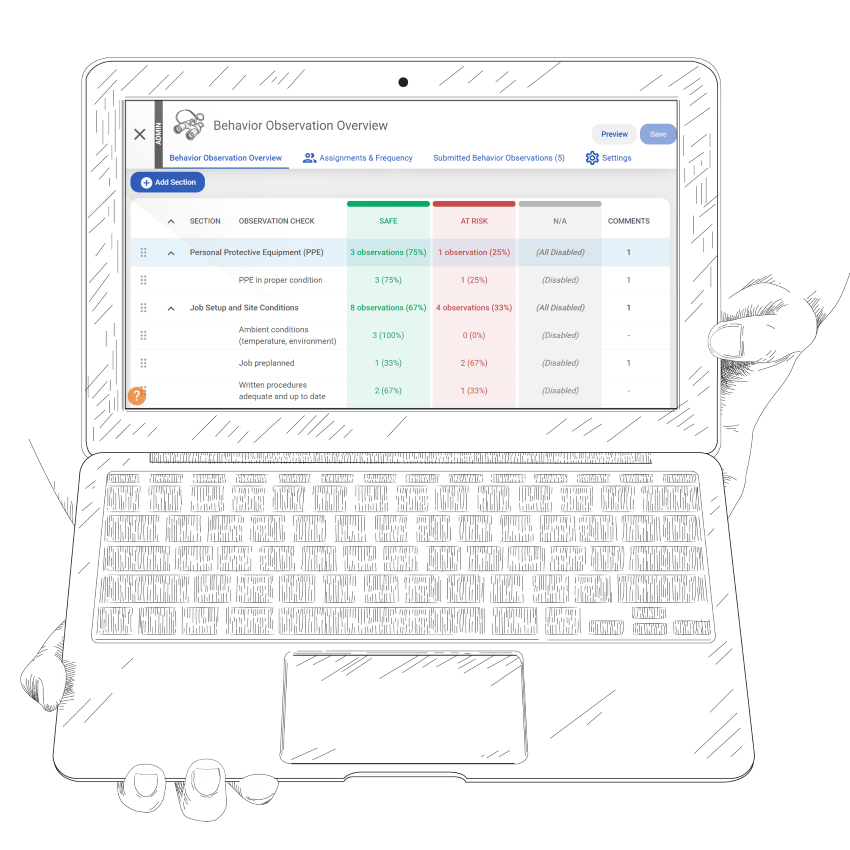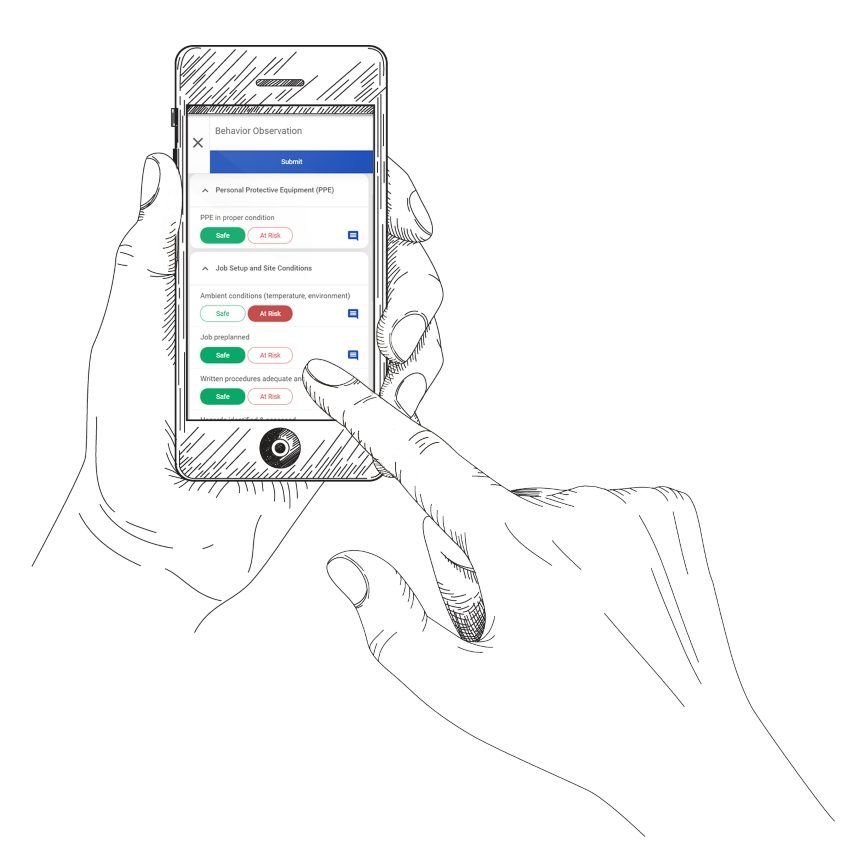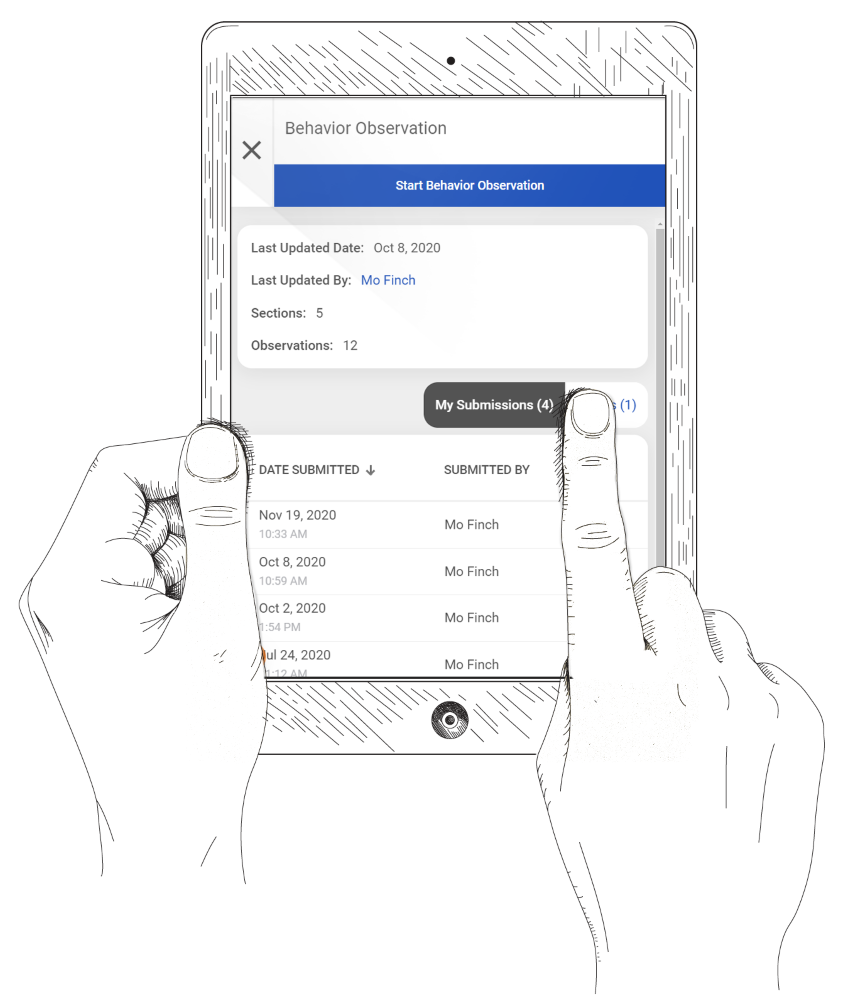The concept of behavior based safety is not meant to stir up debate on whether workers are "responsible" for unsafe acts, or whether they are the root cause of injuries and quality issues. Behavior based safety simply suggests undesirable behaviors can contribute to unwanted outcomes, and that they can be identified and corrected. Not every organization will embrace behavior-based safety, but if you do, we have the tool to make it work.
The process starts with identifying behaviors that contribute to unwanted outcomes at your workplace. Prior hazard assessments and incident reports are a good place to look. Root cause analysis might identify a few more. Not to worry if your list is not that long though, Workhub has a list of dozens of behavior templates from which to pick and choose. Here are a few examples:
- Proper housekeeping (cleanliness, storage, access)
- Correct tool or equipment for the task
- PPE worn correctly
- Mind on task (not distracted)
- Not rushing
- Not over-exerting
- Stretches and takes micro-breaks
- Not lifting, bending or twisting
- Avoid repetitive motions
- Comfortable (not awkward) position
Keep in mind when creating your list that behaviors are not task-specific. So don't add a behavior for "Operates backhoe safely". (Our Competency tool is what you'll want to use for task-specific assessments.)
Next decide whether all behaviors need to be observed, or whether some are not always applicable to each observation. If you decide N/A is not a valid choice, then "Safe" and "At-Risk" become the only available selections. You can group the behaviors into sections, such as Body Mechanics, Job Setup or Executing Work and sort the behaviors within each grouping. Then assign it to the various roles in your company (as optional or required) and set a frequency, such as 1 observation every month. The frequency requirement applies to observers (observees are anonymous and therefore can't be tracked).
You're basically ready to fire up Behavior Based Safety Observations (BBSOs). However before enabling behavior observations, you might want to assign our Behavior Observation course in Online Training, or maybe write a Policy or Procedure on how they are to be done. But we digress...
Workers with permissions to carry out Behavior Observations will be able to navigate to the module and click "Start Behavior Observation". It's usually a good idea to let the co-worker know they're being observed and to provide feedback along the way (or at least afterward). The observation form is optimized for mobile phones. Observers identify the Location (for reporting purposes) and simply click on the "Safe", "At Risk", or "N/A" buttons and leave comments when appropriate.
Back in the Admin portal, the statistics start to pile up. They'll give you insight into what behaviors are most at-risk so that you can tailor your training, procedures, safety meetings, bulletins and other tools to mitigate any hazards and reinforce desired behaviors!
Overview
Behavior-Based Safety Observation
Observe employees in their day-to-day activities to ensure that they are exhibiting behaviors and attitudes that contribute to a safe workplace.
Identify
Identify behaviors that contribute to unwanted outcomes at your workplace and build checklists to sign-off on.
Assign
Assign observations by position and location.
Designate
Choose staff or supervisors that are qualified to assess other employees.
Analyze the Results
Filter your submissions by date and track the results over time.
Still have questions?
Let our knowledgeable sales team give you a full product tour and answer any specific questions you may have.
